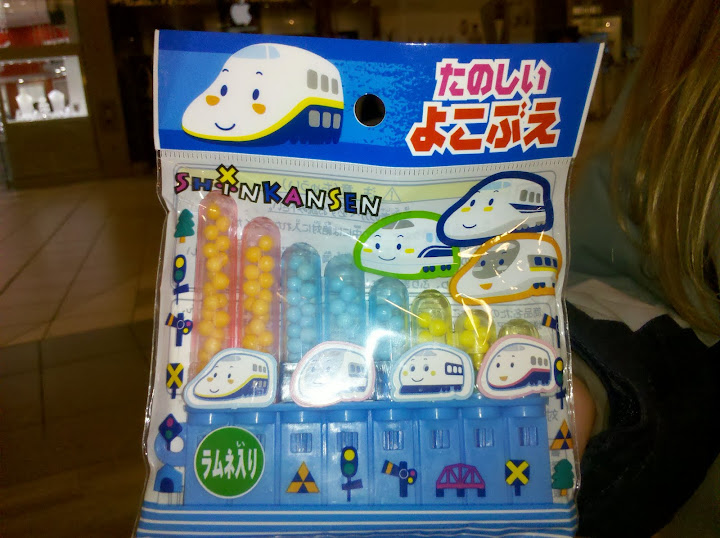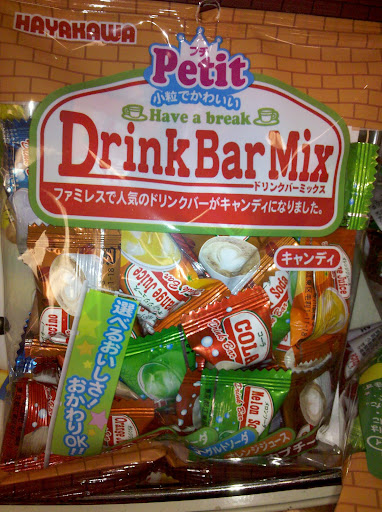Sweet Insight: Candy from around the world
One of the most engaging ways for your kids to gain insight into other cultures is through candy! Begin your quest for sugar knowledge by critically reviewing candy at home. What does American candy tell us about American culture? Well, we have a lot of Hershey’s chocolate – definitely a quantity over quality phenomena. And, while our candy landscape was once dominated by simple (potentially even unwrapped) treats like dots of sugar on strips of paper, wax bottles filled with colored syrup, and giant Gobstoppers, we now sport a candy toilet bowl with a sour plunger. What does this candy revolution say about the recent changes in American culture?
Toilet candy
What can other cultures tell us with their candy? The Japanese motorized rotating lollypop has to be the most telling candy we’ve found – high-tech beyond your imagination. No need to waste all that energy actually spinning the lollypop stick. Bonus, the candy stays perfectly round as you eat it. We also found a Japanese candy harmonica. When you blow into the harmonica, sugary bits dance around in clear plastic tubes. Not sure what a candy harmonica tells us about Japan though. In Austria, where many cultural events and activities are designated as either für kinder (for children) or nicht für kinder (not for children), we discovered that even the chocolate reflected this generational divide. There is a popular and extensive brand of chocolate just for “kinder”.

Harmonica candy
Collecting candy as you travel can add spice to your adventure. For example, from Mexico, we discovered salsa-ghetti. A somewhat revolting mixture of sour dust, gummy pasta, and chemical tomato flavoring. I shudder to imagine what that should tell us about Mexican culture. We’ve found butter and salt flavored candy that had a sub-label on the package “I’m sorry but I cannot tell this deliciousness in a single word”. Say that to your friend next time you’re invited over for dinner! We were, at first, expecting the “Drink Bar Mix” to be alcoholic (nicht für kinder). Instead, it turned out to be hard candy in the flavor of various types of soda pop and we learned that Japan has an enormous variety of interesting soda pop flavors from that experience.

Drink Bar Mix
Candy can be collected, shared, and remembered. Your kids could purchase two of each type of candy – one to taste immediately and one to collect. Candy doesn’t last forever but a collection can probably make it safely home after even a 2 or 3-month trip. The candy collection is small and relatively light and will be a unique and engaging way for your kids to share their adventure with their friends at home. Candy wrappers are even smaller and lighter. They can be pasted into journals or collected in a little ziplock bag. Your kids might even be able to find a popular candy and collect wrappers in multiple languages. Tape these souvenirs to the map as you travel or tape them to a postcard mailed to grandparents.
Hungarian candy
Just want strange candy? Try niftycandy.com/weirdcandy.html for unicorn hair, zombie juice, and pig boogers. Trying to keep it interactive and “educational”? Make your own chocolate covered bacon or grape crisps at pattyinglishms.hubpages.com/hub/Weird-and-Wacky-Candy-Recipes.
Also enjoy Sweet Tooth: The Bittersweet History of Candy by Kate Hopkins, which is humorously told as she travels across European in search of sweets. Her book includes ideas about how candy, and the corporations that make it, has shaped world history.
Ashley Steel is the Traveling with Kids Editor for Wandering Educators. Read more at her website and book: www.familyontheloose.com
All photos courtesy and copyright Ashley Steel
-

- Log in to post comments





















Lindsey Sirju
Eating the local fare in a country is always what makes the experience unqiue. I love going into old fashion candy stores as well. Always cool to see candy that isn't as widely available as it use to be.